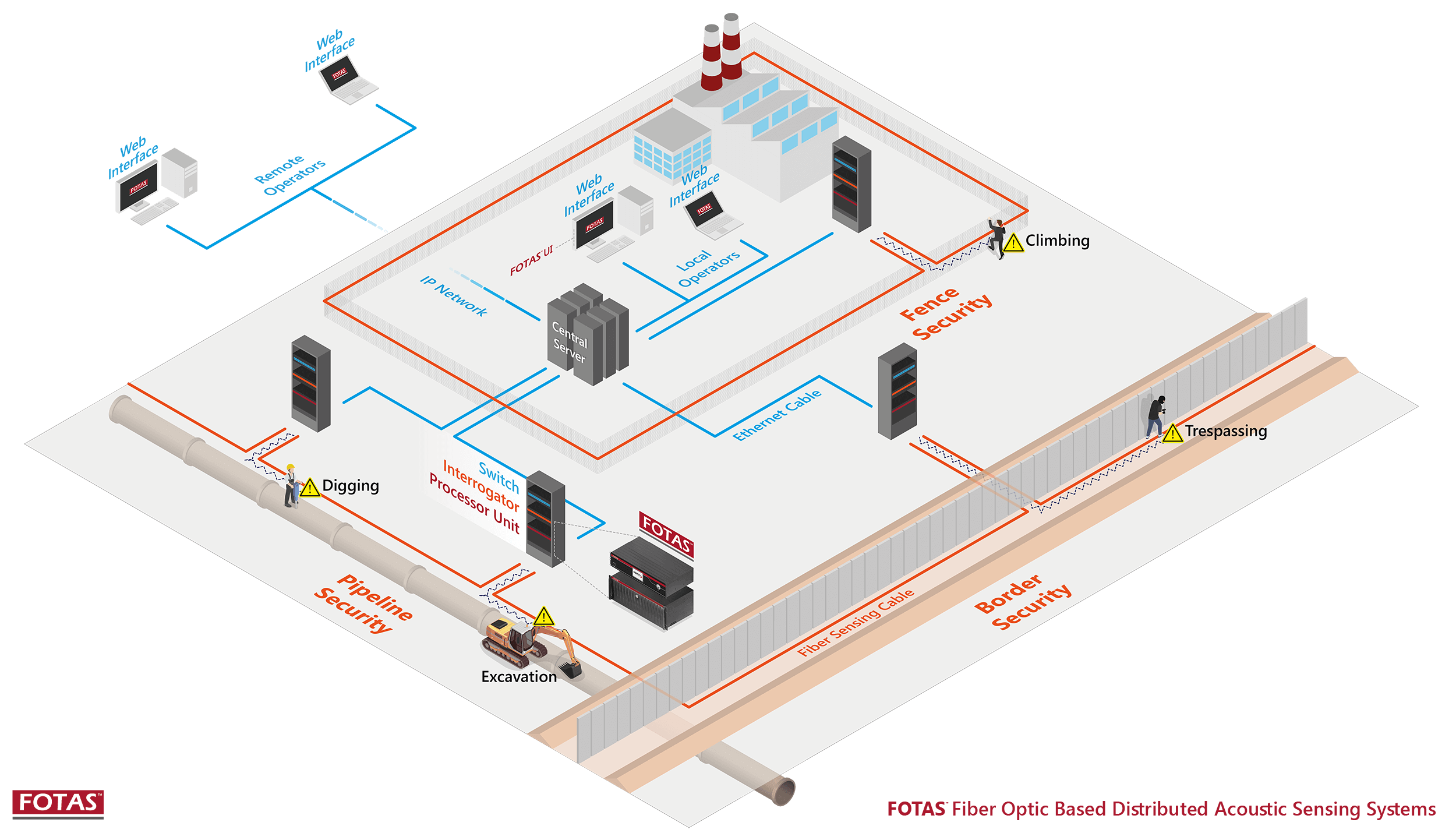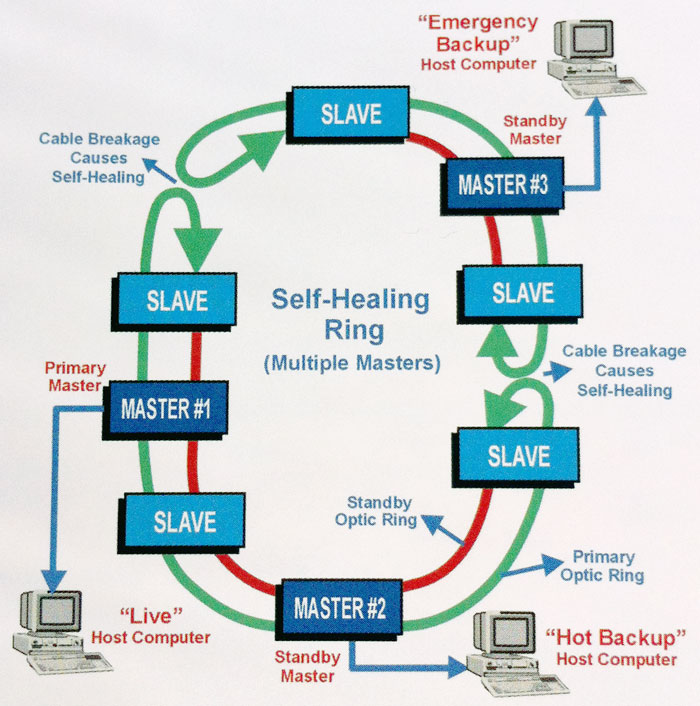The Importance of Fiber Optic Security System Enhances Your Property’s Safety and Monitoring
Why Fiber Optic Safety And Security Solutions Are the Future of Defense
The change to fiber optic security systems marks a considerable development in the realm of defense, driven by their outstanding information transmission abilities and resilience to external interferences. These systems not only help with faster and extra reputable communication yet additionally provide an affordable service with lowered maintenance requirements. As the landscape of security evolves together with arising innovations such as AI and IoT, the potential for fiber optics to improve and redefine security frameworks comes to be increasingly obvious. Nonetheless, the effects of these developments elevate essential questions about the future of protection steps and their performance in an ever-changing atmosphere.
Benefits of Fiber Optic Equipments
One of the key advantages of fiber optic systems is their superior data transfer capacity, which helps with the transmission of huge volumes of data over long ranges without considerable loss. This characteristic is particularly valuable for protection applications that require the continual tracking and transfer of high-definition video feeds, sensor information, and other important information. Fiber optics can fit the growing needs of contemporary protection systems, making certain that data remains intact and dependable.
In addition, fiber optic cable televisions are much less at risk to electromagnetic disturbance, which can be a considerable problem in atmospheres with various digital tools. This resistance improves the integrity of the data being transmitted, consequently reducing the risk of information breaches or system failings. Fiber optic systems are inherently a lot more safe than typical copper wires, as touching right into a fiber optic line without detection is exceptionally hard.
The sturdiness of fiber optic wires also adds to their charm. They are resistant to ecological factors such as moisture and temperature level changes, minimizing upkeep costs and increasing system longevity. On the whole, these advantages setting fiber optic systems as a robust and efficient choice for modern safety and security frameworks, guaranteeing reliable and safe data transmission.
Enhanced Data Transmission Rate

The capacity to transfer substantial amounts of data rapidly facilitates the smooth combination of high-definition video feeds and advanced analytics. Safety and security systems can currently process and examine details in real-time, enhancing reaction times and situational awareness. In addition, fiber optic connections support longer transmission distances without degradation of signal high quality, making them ideal for extensive security networks.
The increased rate of fiber optic systems not only improves the efficiency of protection operations yet likewise decreases latency. This is particularly important in critical situations where prompt decision-making can stop safety and security violations or minimize prospective hazards. As companies proceed to focus on safety and efficiency, the demand for quick and trusted data transmission will undoubtedly strengthen fiber optic systems as a cornerstone of modern-day safety facilities.
Resistance to Disturbance
Fiber optic safety systems constantly demonstrate outstanding resistance to electromagnetic interference, a crucial advantage in atmospheres prone to digital noise. Unlike conventional copper wires, which can be negatively affected by electromagnetic fields, superhigh frequency disturbance, and other forms of electric disruption, fiber optic cable televisions utilize light to transfer data. This integral building makes sure that the signals stay clear and unchanged, no matter bordering digital task.
Making use of glass or plastic fibers in fiber optic technology creates an obstacle against interference, permitting trusted data transmission even in challenging situations such as industrial facilities, metropolitan locations with high digital web traffic, or locations near radio towers. This characteristic dramatically reduces the possibility of signal degradation or loss, making fiber optic systems particularly ideal for safety and security applications where integrity and precision of data are extremely important.
Furthermore, this resistance to disturbance improves the general efficiency and integrity of safety and security systems, guaranteeing that tracking and sharp systems function effortlessly. In a globe where security is increasingly intimidated by innovative technologies, the durability of fiber optic more helpful hints systems stands apart as a critical feature, enhancing their status as a crucial part of contemporary protection framework.
Cost-Effectiveness In Time
Significant price financial savings can be attained gradually with the execution of fiber optic protection systems. While the first financial investment may seem higher contrasted to traditional copper-based systems, the long-lasting monetary benefits emerge through decreased functional and upkeep prices (fiber security). Fiber optic cords are inherently more long lasting and less at risk to environmental elements, which equates to decrease substitute and fixing expenditures over their life expectancy
Additionally, fiber optic systems need much less power to run, which additionally reduces power costs. Enhanced information transmission abilities permit less repeaters and amplifiers, decreasing tools investment and enhancing setup processes. The scalability of these systems also adds to cost-effectiveness, as companies can expand their safety and security infrastructure without incurring considerable added expenses.
An additional aspect to think about is the raised performance in monitoring and action abilities that optical fiber offer. Enhanced real-time browse around here data transmission can cause quicker occurrence feedback times, potentially mitigating losses and obligations linked with security breaches. Altogether, the long-lasting advantages of fiber optic protection systems not just warrant the first expenditure but additionally position them as an economically sensible option for organizations seeking robust protection solutions.

Future Innovations in Safety And Security
Advancing technologies are readied to reinvent protection systems, integrating synthetic knowledge (AI) and artificial intelligence to improve danger detection and feedback abilities. These developments will allow protection systems to examine substantial amounts of data in real-time, identifying patterns and anomalies that indicate potential dangers. This proactive technique will allow quicker decision-making and extra reliable incident reactions.
In addition, the incorporation of the Net of Things (IoT) is paving the means for interconnected safety and security tools, supplying thorough surveillance and tracking. Smart sensing units can relay information about ecological modifications, while automated alerts can alert safety and security employees quickly of questionable activities.
Additionally, the advancement of biometric innovations will better reinforce safety systems. Face recognition, fingerprint scanning, and retina recognition are becoming a lot more sophisticated, offering layers of verification that are tough to bypass.
Final Thought
In verdict, fiber optic protection systems stand for a considerable development in security innovation, offering unmatched information transmission speed, resistance to electromagnetic disturbance, and long-term cost-effectiveness. As the need check it out for advanced safety and security remedies remains to grow, the integration of fiber optics with emerging modern technologies such as AI, IoT, and biometrics will certainly better boost safety and security infrastructures (fiber security). The combination of these developments will certainly guarantee a much more safe and receptive atmosphere, solidifying fiber optics as a keystone of future security systems